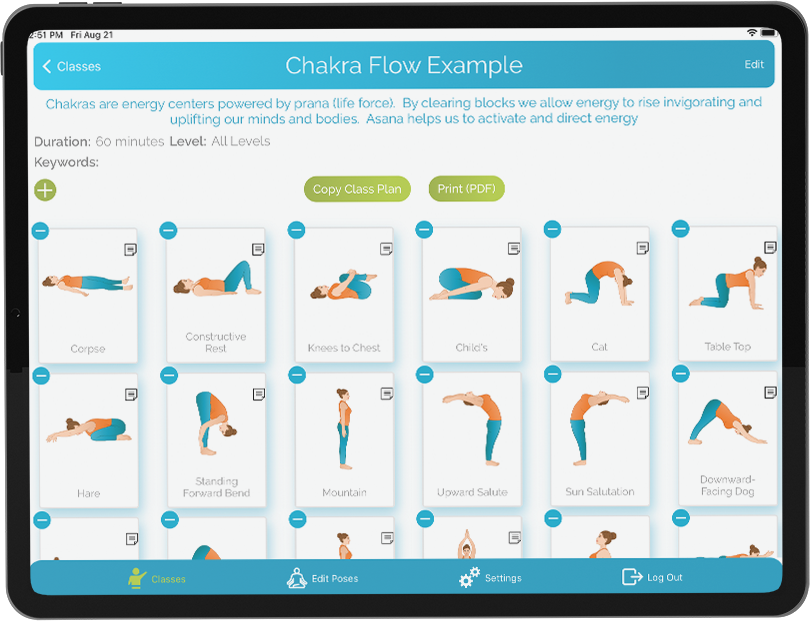Part 2: A Guide to Teaching Your First Ever Private Yoga Class
October 5, 2016 | 5 min read
In Part 1: How to start teaching private yoga, I outlined my 5 top tips for finding and keeping private yoga students. Now, once you have that all important first yoga client; where do you begin? Part 2: A Guide to Teaching Your First Ever Private Yoga Class will take you through the process of actually teaching yoga to private clients. Everything from teaching strategies to getting paid will be covered in the five sections below.
How to teach
Teaching private yoga is very different to all-levels group classes. Group classes tend to focus on motivation, building momentum, energy and movement. The lone yogi student is looking for a meaningful experience. To achieve that, you need to teach to their deepest needs. You might think of private yoga sessions as a dialogue between instructor and client. During warm-up and entry into a posture, continue the conversation, asking your client, where they are tension, guide their breath into the stretch and exhale release tension. Continually adjust the pose to suit your clients comfort, need to stretch, relief tightness, etc., all the while encouraging his/her to pay close attention to the sensations and minute adjustments made by mind, breath and body. Help your client to be more mindful, by drawing their attention to the barely detectable and profound changes taking place. These changes may include relaxation of the breath, lengthening of muscles, reactive facial expressions, improvements in flexibility and strength.
Understanding their needs
Meet them where they are- is the general rule of thumb for private clients. Remember, you are teaching an individual with sensitivities, vulnerabilities and emotional triggers. This is not to say, you should be afraid of your students responses. Laughter, tears, frustration – as any experienced yogi knows-are all part of the yoga experience. Encourage your clients to welcome these moments, embracing genuine moments of pleasure and pain-acknowledging issues in the tissues and their release. These moments are also opportunities to teach yoga philosophies of self-love, acceptance and Ahimsa.

Planning the class
Meet with your client first – before you plan-the-sessions. If that is not possible, arrange for a FaceTime or phone interview. It is important for both you break-the-ice and establish a repartee. Most studios request members and guests complete a short questionnaire to establish years/level of practice, preferred and/or learned styles, previous experience of private yoga, referrals from other members or teachers and injuries/medical issues. As follow-on, I suggest exploring all expectations and any goals for this individual. These may range from the quite personal to basic yoga skills. Whatever they are, it is your job to try and help them meet their personal or skill goals.
Ethics and codes of conduct
Sexual relationships with clients are an abuse of the yoga teacher-client relationship and against the yoga teacher code of conduct. That bridge should never be crossed under any circumstance. If you feel a relationship is leaning in that direction, it is your responsibility to guide that student toward another teacher. Teaching in a 1:1 situation lends itself to a professionally intimate relationship, but this should never be mistaken for something else. Physical contact is usually unavoidable in yoga, though it is best practice to ask your client, if they welcome physical or verbal adjustments during sessions. Placement of hands and body should never be sexual. Yoga teacher training sessions and workshops cover this aspect of yoga teaching in detail. It is important to respect your clients privacy and honor their body. Equally as important is the understanding that you as a teacher are guiding someone through a healing process; but you are not taking on the job of fixing someone. Let the yoga do its job.
Fees & Payment
Private yoga teachers typically make anywhere from $50-150 an hour. You may set your fees at any price dependent on your clients’ willingness and ability to pay. You should take into consideration location. If you are teaching at your local studio space, most will set the fee and pay you a portion of that rate. Many private yoga teachers and clients therefore prefer a private home practice, where you can negotiate payment and timetables between yourselves. Likewise, novice private yoga teachers may want to set their fees in line with the going rate. Research the market in your area, by checking out fees at local studios and ask other yoga teachers what fees they regularly charge. Most importantly, value what you do-your training, time and expertise is paid commodity in the market. You don’t want to give it away or inflate the price.
One last tip yoga teacher: there is no one size fits all in private yoga. Every class will feel different, because it is focused on an individual. There is not one choreographed, fail-safe sequence of asanas or sessions that works better than any other. The alchemy of yoga might be said to be a potion breath, self-belief and repetition, but the magic of yoga is in the mind and body connection. That’s the yoga folks.
Posted in Teaching Tips




